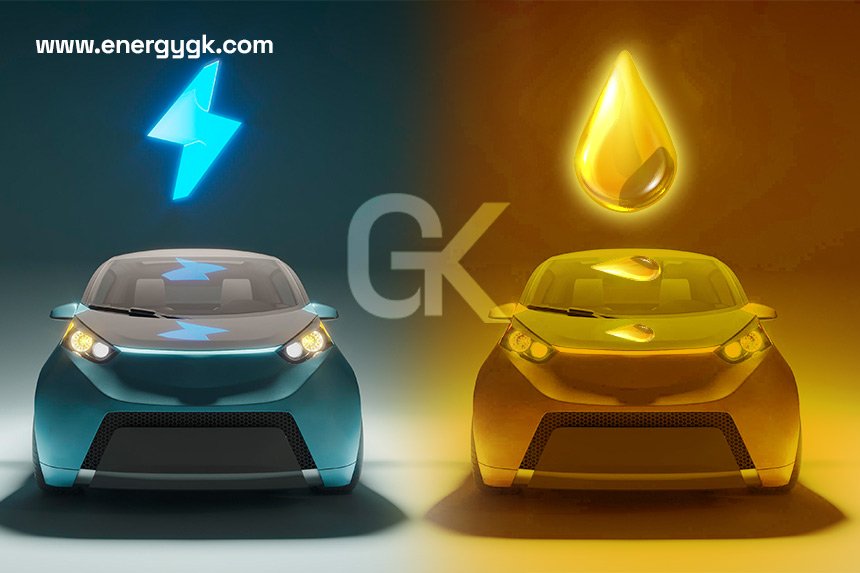Introduction
In today’s rapidly evolving automotive landscape, the shift towards sustainable transportation has gained significant momentum. Electric vehicles (EVs) have emerged as a promising alternative to conventional vehicles (CVs) powered by internal combustion engines. This article aims to compare and contrast EVs and CVs, exploring various aspects such as environmental impact, energy efficiency, cost considerations, infrastructure, performance, government incentives, market trends, and the future outlook.
Environmental Impact
One of the primary motivations behind the adoption of EVs is their potential to reduce carbon emissions and combat climate change. EVs produce zero tailpipe emissions, unlike CVs, which release greenhouse gases and contribute to air pollution. By transitioning to EVs, we can significantly reduce the carbon footprint of the transportation sector and improve air quality in our cities. Additionally, the increasing availability of renewable energy sources further enhances the environmental benefits of EVs.
Energy Efficiency
When it comes to energy efficiency, EVs have a clear advantage over CVs. While CVs rely on internal combustion engines, which have limited efficiency due to energy losses from heat and friction, EVs use electric motors that convert electrical energy directly into motion. This direct conversion process makes EVs significantly more energy-efficient, allowing them to travel longer distances on the same amount of energy. Higher energy efficiency translates into reduced dependence on fossil fuels and a more sustainable transportation system.
Cost Considerations
The cost of purchasing an EV has traditionally been higher than that of a CV due to factors such as battery technology and production scale. However, this gap is gradually narrowing as advancements in technology drive down battery costs and economies of scale come into play. Moreover, operating and maintenance costs of EVs are generally lower compared to CVs. EVs have fewer moving parts, which means fewer components to maintain or replace. Additionally, the cost of electricity as a fuel source for EVs is generally lower than gasoline or diesel, resulting in long-term cost savings for EV owners.
Infrastructure and Range Anxiety
The availability of charging infrastructure is a crucial factor influencing the adoption of EVs. While gasoline stations are abundant, charging stations for EVs are still being deployed and developed. However, significant progress has been made in expanding the charging network, and governments and private entities are investing heavily in building charging infrastructure. Furthermore, advancements in fast-charging technologies are reducing the charging time, making it more convenient for EV owners. Range anxiety, the fear of running out of battery charge, is also being addressed through the introduction of long-range EV models and improvements in battery technology.
Performance and Driving Experience
EVs offer unique advantages in terms of performance and driving experience. Electric motors provide instant torque, delivering quick acceleration and a responsive driving experience. This characteristic makes EVs particularly suitable for city driving and stop-and-go traffic. Furthermore, the absence of a traditional internal combustion engine results in a quieter and smoother ride. However, CVs still hold an advantage in terms of long-distance travel and access to an extensive network of refueling stations.
Government Incentives and Policies
Governments around the world are implementing various incentives and policies to encourage the adoption of EVs. These include financial incentives such as tax credits, rebates, and subsidies, as well as regulations promoting the use of EVs, such as emissions standards and zero-emission vehicle mandates. These initiatives aim to accelerate the transition to electric mobility and create a supportive environment for EV manufacturers and consumers. In contrast, policies related to CVs mainly focus on improving fuel efficiency and reducing emissions through stricter regulations.
Market Trends and Future Outlook
The global market for EVs has experienced remarkable growth in recent years, driven by technological advancements, declining costs, and increased consumer awareness. EV sales have been consistently rising, and major automakers have announced ambitious plans to electrify their vehicle lineups. As battery technology continues to improve and charging infrastructure expands, the future of EVs looks promising. While CVs will remain relevant in certain use cases, the widespread adoption of EVs is expected to reshape the automotive industry and contribute to a more sustainable future.
Conclusion
In the debate between electric vehicles and conventional vehicles, EVs are emerging as the frontrunners in terms of environmental impact, energy efficiency, and long-term cost savings. While challenges such as charging infrastructure and range anxiety persist, ongoing advancements and supportive government policies are addressing these concerns. As technology continues to evolve and economies of scale kick in, the transition to electric mobility will gain further momentum, ultimately leading to a more sustainable transportation system.
FAQs
- Are electric vehicles really better for the environment?
- Yes, electric vehicles produce zero tailpipe emissions and contribute to a significant reduction in greenhouse gas emissions compared to conventional vehicles.
- Are electric vehicles more expensive than conventional vehicles?
- While the initial cost of electric vehicles may be higher, they offer long-term cost savings due to lower operating and maintenance costs.
- How long does it take to charge an electric vehicle?
- Charging times vary depending on the charging method and the capacity of the vehicle’s battery. Fast charging technologies can provide a substantial charge in a matter of minutes, while slower charging methods may take several hours.
- Can electric vehicles go the same distance as conventional vehicles?
- The range of electric vehicles has been steadily increasing, and there are now EV models available that can cover long distances on a single charge. However, CVs still hold an advantage in terms of long-distance travel and access to refueling stations.
- Will electric vehicles replace conventional vehicles in the future?
- While it is difficult to predict the exact timeline, electric vehicles are expected to play a significant role in the future of transportation. The increasing focus on sustainability and advancements in EV technology make it likely that EVs will gradually replace conventional vehicles over time.







